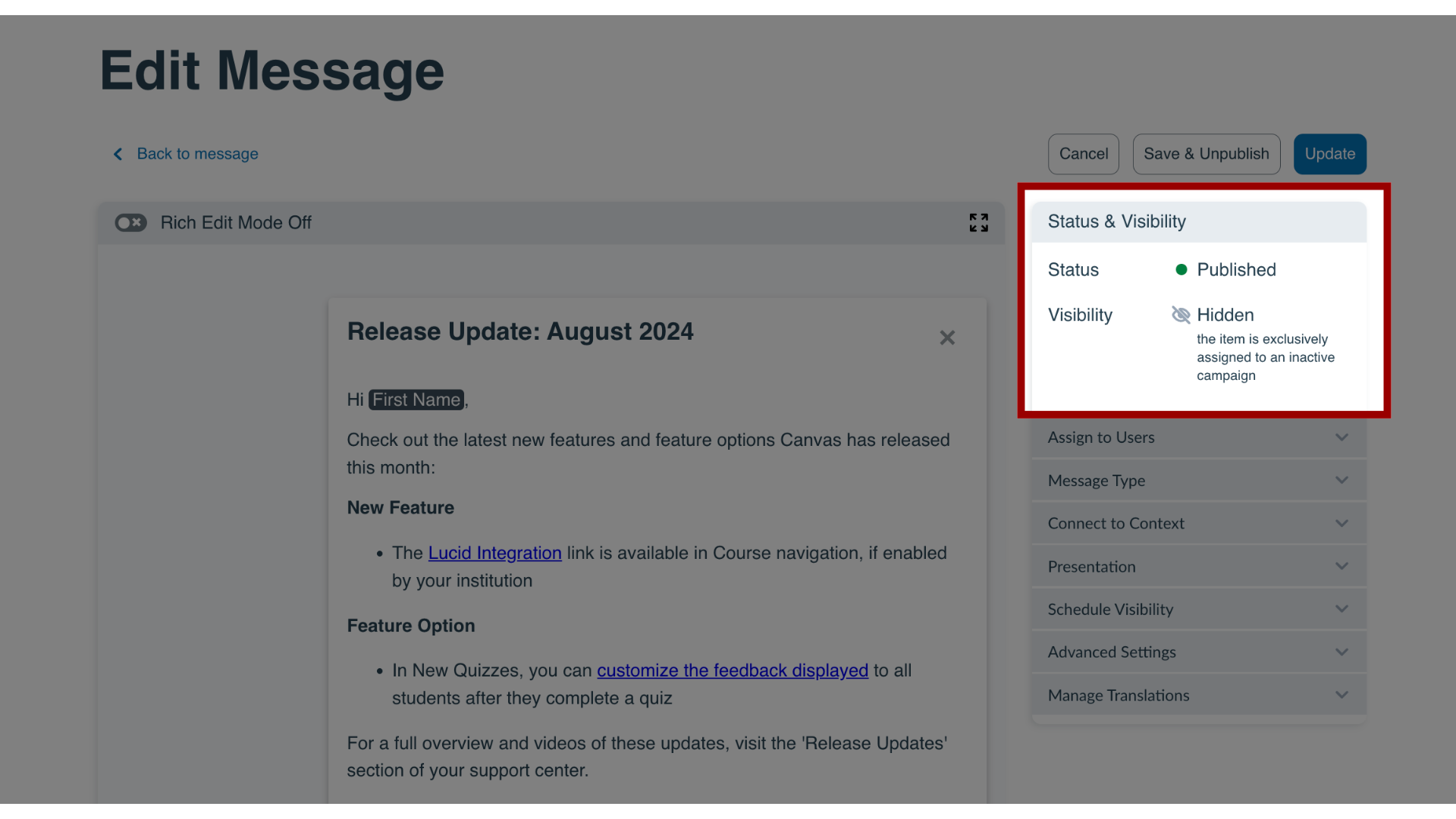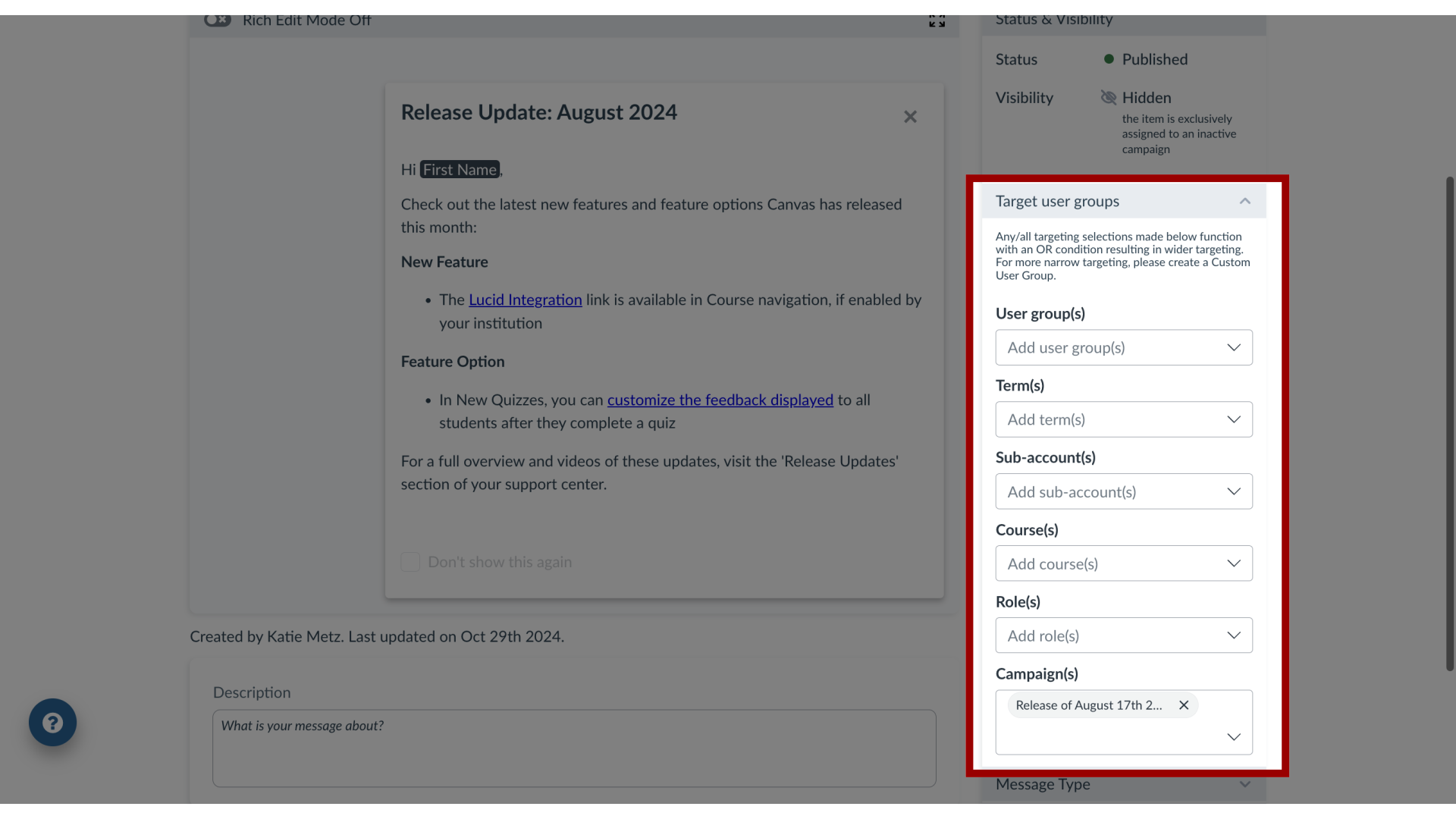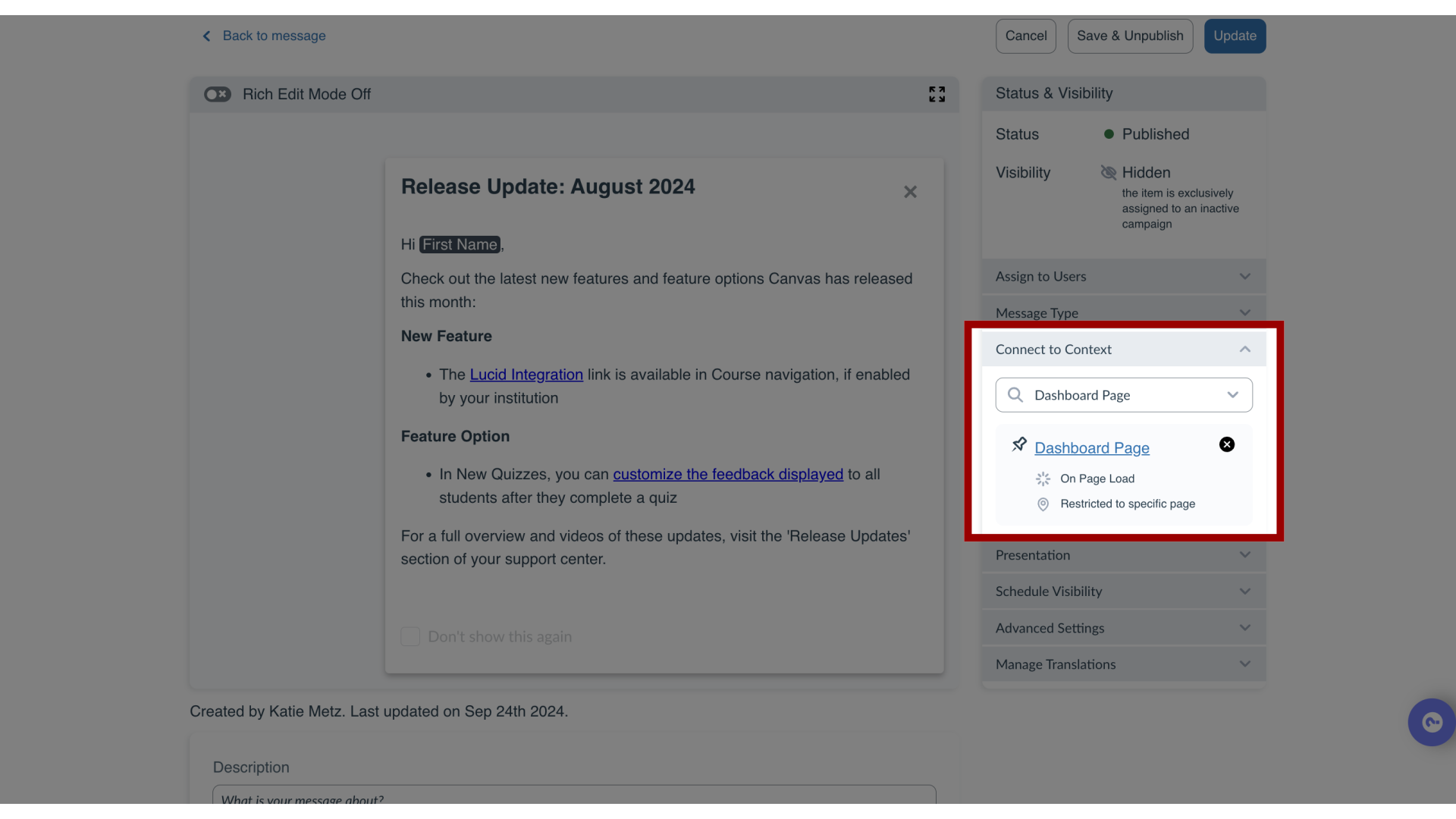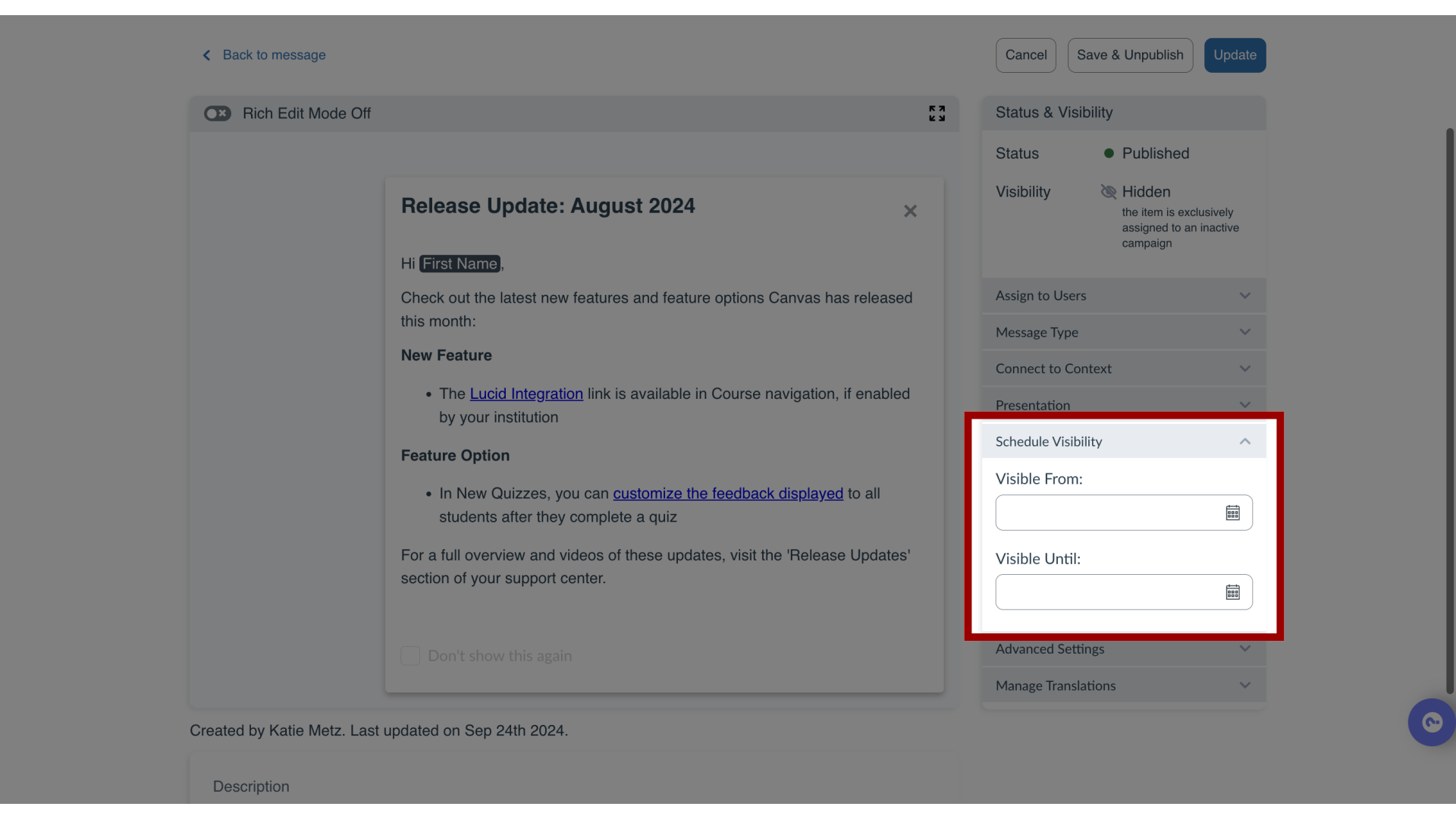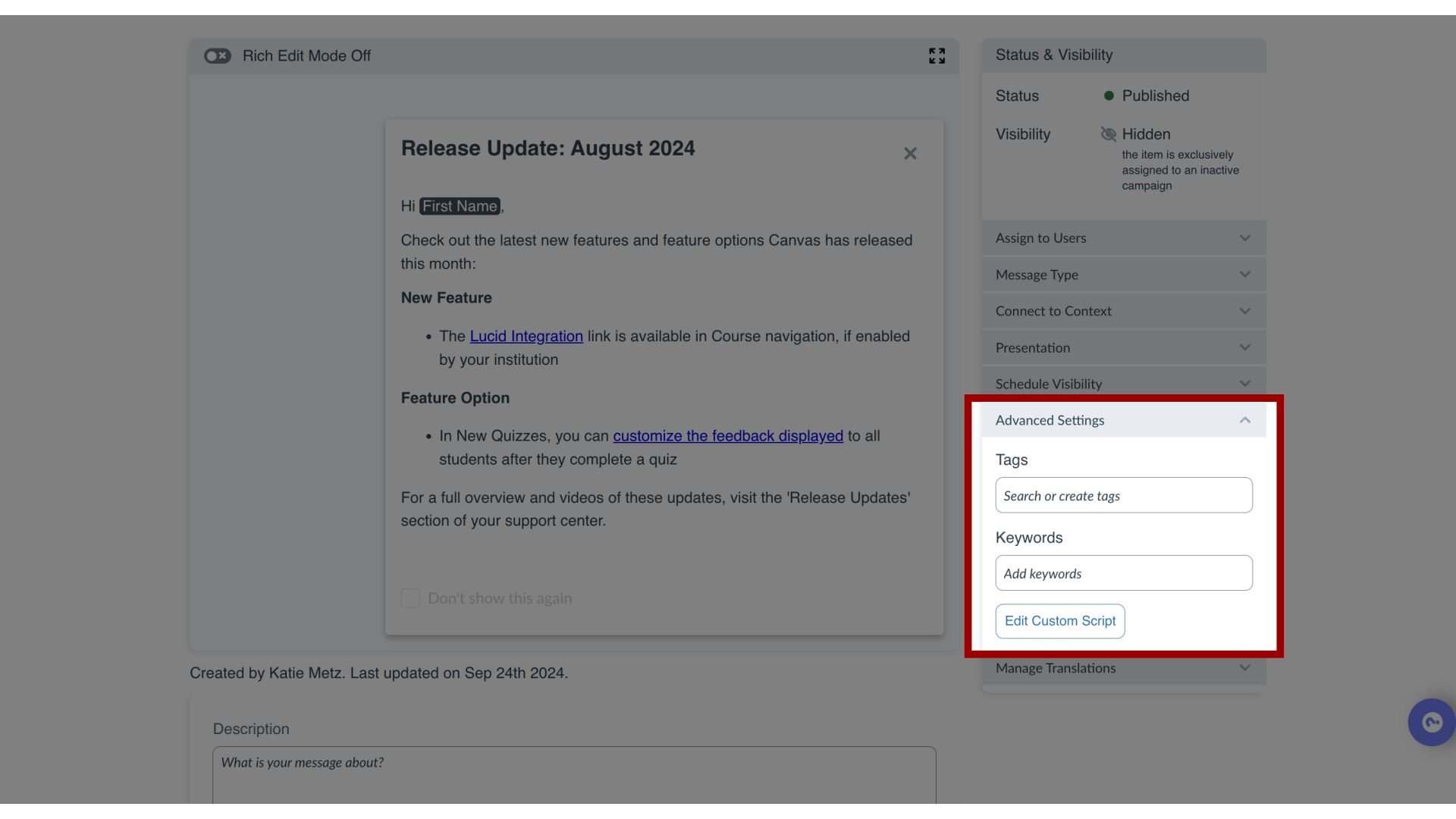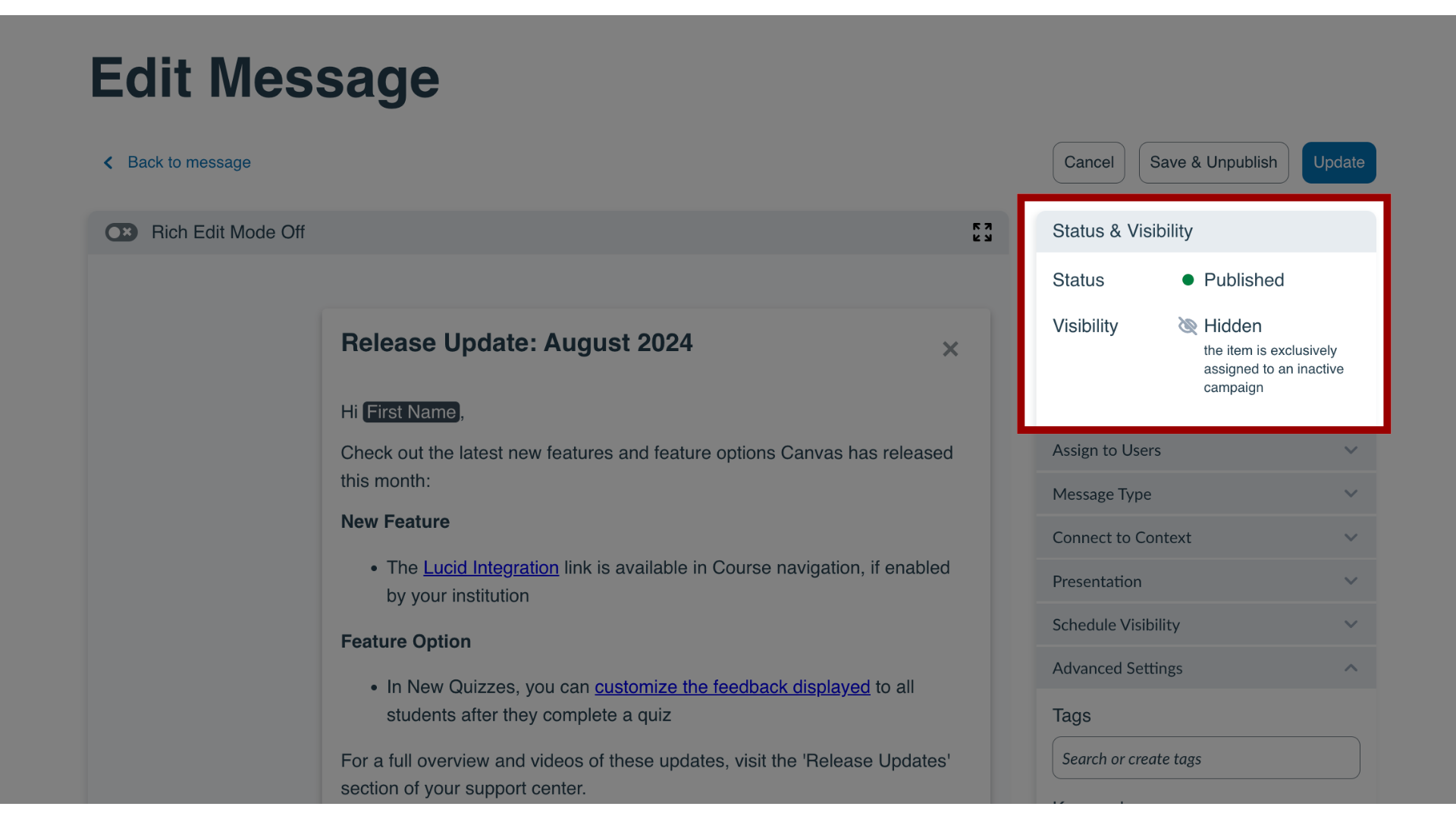What factors determine Impact message visibility?
Impact messages are displayed to users within your learning application based on several targeting rules and visibility settings. This article will help you understand all the factors that determine the visibility of a message.
There are five major factors that can impact who sees your messages in the learning application.
- Message Status
- Assigned Users
- Connected Context
- Scheduled Visibility
- Tool Categories
How can I debug message visibility?

Are you having trouble understanding why your message is not visible? The Status & Visibility tab on the View Message page provides you with a quick summary of one or more reasons why your message may not be visible to users.
Here’s what you can do for each hidden by indicator:
- Hidden by draft state: Publish your message!
- Hidden by unpublished campaign: Check the “Assigned to Users” tab to see which campaign this message is connected to, then locate the relevant campaign on My Campaigns and publish it.
- Hidden by tool category: Check the “Advanced Settings” tab to see which tool category is associated with this message. Then, via the global settings menu go to the Tool Categories page, find the relevant category, and toggle on the visibility.
- Hidden by date range: Check the “Schedule Visibility” tab and review the start and end date/time selections.

